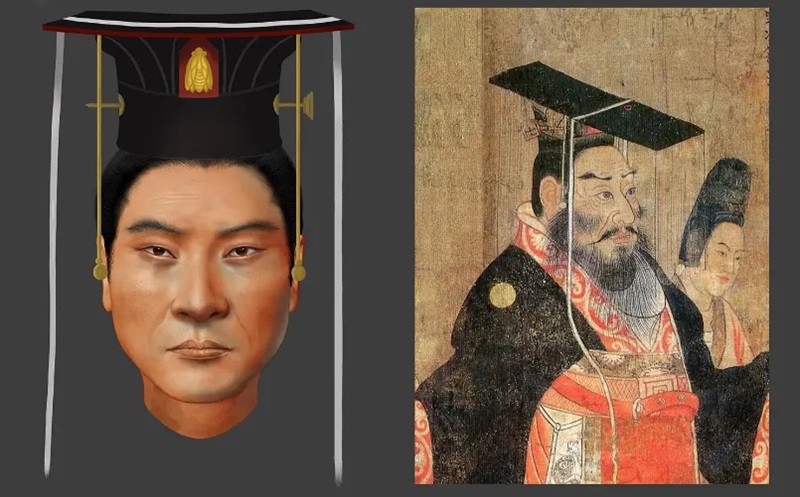
Archaeologists successfully extracted ancient DNA from the remains of a sixth-century Chinese emperor, who reigned during the country’s tumultuous Dark Ages, and utilized this genetic material to reconstruct the ruler’s visage.
Emperor Wu governed a portion of the Northern Zhou dynasty in China, recognized for unifying the northern region of ancient China amid a period of chaos.
In 1996, a tomb in northwestern China yielded significant archaeological finds. Published in the journal Current Biology on Thursday (Mar 28), a study examined genetic material extracted from the emperor’s remains, notably an almost intact skull.
This genetic information enabled researchers to delve into aspects of the monarch’s appearance, health, and lineage.
Experts noted that Emperor Wu belonged to the Xianbei, a little-studied nomadic group inhabiting present-day northern and northeastern China, as well as Mongolia.
Genomic analysis revealed that Wu likely possessed black hair, brown eyes, and dark skin complexion, counter to the perception of the Xianbei having distinctive features like thick beards, prominent nose bridges, and blonde hair.
Shaoqing Wen, an associate professor at Fudan University in Shanghai and a study co-author, remarked, “Our analysis shows Emperor Wu had typical East or Northeast Asian facial characteristics.”
Archaeologists aim to uncover the circumstances surrounding the king’s demise, hoping that ancient DNA may shed light on the cause of Wu’s sudden death at age 36, possibly indicating illness or poisoning.
While no conclusive evidence regarding the cause of death was found, researchers identified a genetic predisposition to stroke.
Utilizing the genetic data extracted from the emperor’s remains, including his skull, researchers produced a 3D facial reconstruction, offering a glimpse into his appearance.
Tobias Houlton, a lecturer in craniofacial identification and forensic imaging at the University of Dundee, praised the study for its insightful portrayal of Emperor Wu, noting the limitations of predicting skin, hair, and eye color solely from skeletal remains, making genetic analysis a valuable tool.

Post Your Comments